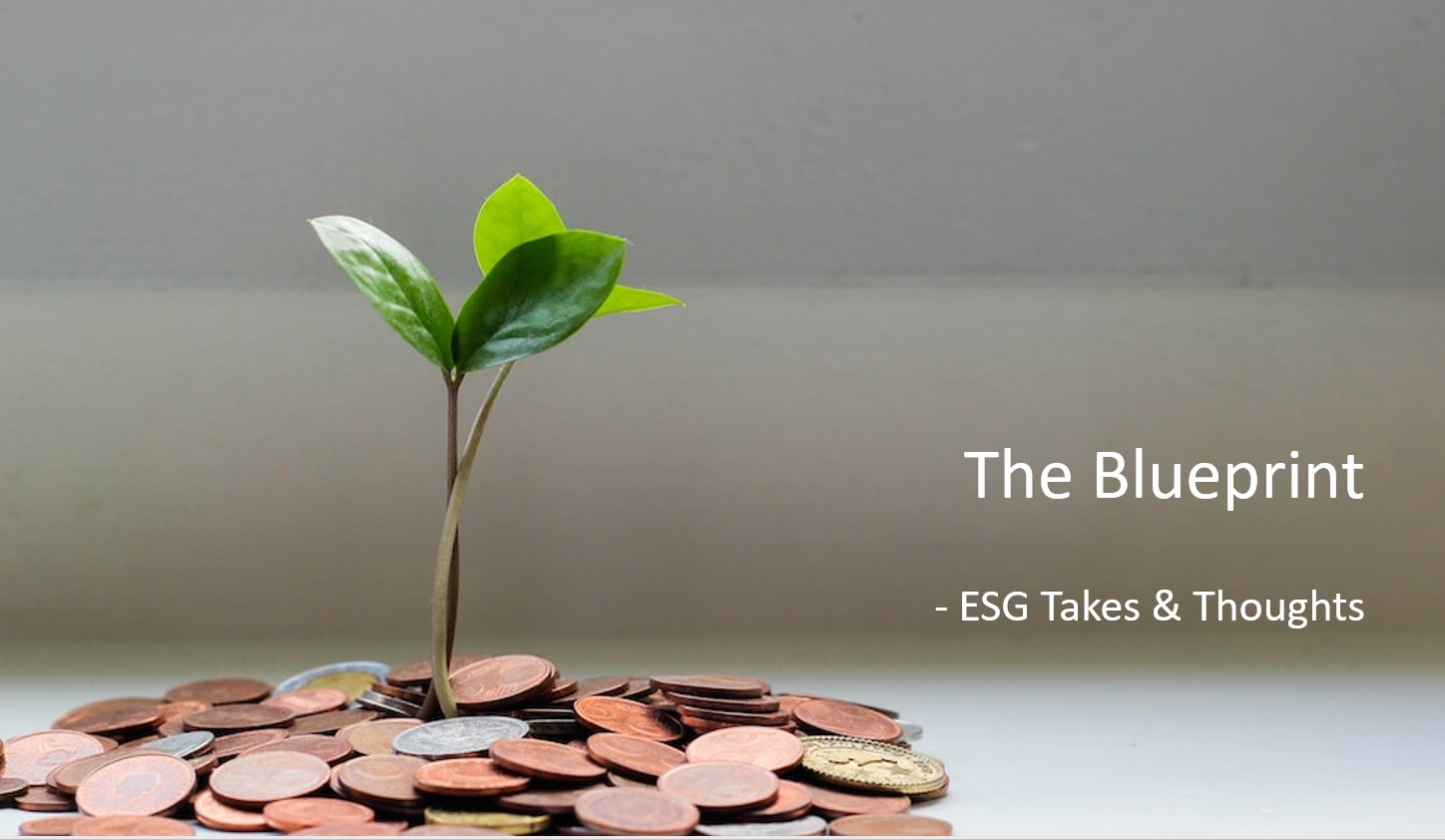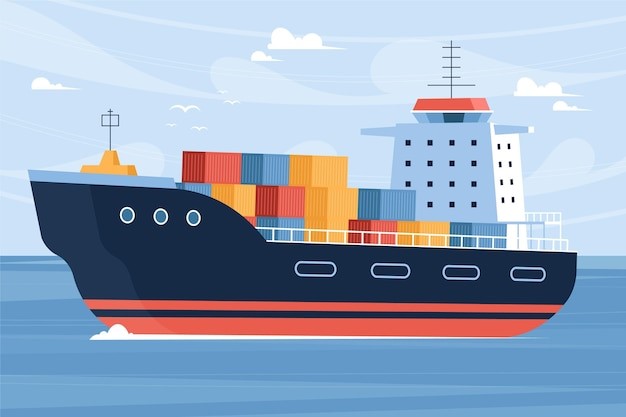
New climate deal for GHG reduction in shipping
Global shipping transports an estimated 90% of goods worldwide and contributes about USD380 billion to the economy (ICS, OECD). Maritime trade is expected to grow at an average of 2.1% per annum over the next 5 years, below the 3.3% average observed over the past 30 years (UNCTAD). Disruptions in ports and shipping lanes can hinder the smooth flow of goods due to factors such as logistical delays, infrastructure issues, or extreme weather events. The industry must now address the climate-related risks and uncertainty which could threaten its survival.

Container ships are the largest contributor (30%) to shipping emissions (IMO); Source: Freepik
Charting course for emissions reductions
According to the 4th International Maritime Organisation (IMO) Greenhouse Gas (GHG) Study, maritime transport accounts for about 2.9 per cent of global GHG emissions (IMO, WWF). On 7 July 2023, member states adopted the highly-anticipated 2023 IMO Strategy to curb emissions from the shipping industry.
To advance the climate transition, member states agreed on the following:
- reach net-zero GHG emissions by or around 2050
- target at least 20% emissions reductions by 2030, striving for 30%
The 2023 IMO strategy sends a market signal to the maritime sector and fuel suppliers in the race toward net-zero. This is a step forward from the IMO’s Initial GHG strategy released in 2018 which aimed to reduce GHG emissions by 50% by 2050 (ICCT, UN). Now, to stay on track towards limiting temperature rise by 1.5°C, the industry must go beyond the IMO’s targets and cut emissions by 45% by 2030 and reach net-zero by 2040 (SBTi).
Financial Implications of emissions policies and transition risk
Transition risks such as shifts in IMO-led measures directly impact the financial aspects of shipping providers. For example, alterations in regulations regarding GHG emissions, advancements in technology, and fluctuations in fuel prices can affect the operational expenses of ships powered by fossil fuels.
Two IMO initiatives for ship design and energy efficiency have already come into effect – the Energy Efficiency Existing Ship Index (EEXI) and Carbon Intensity Index (CII). EEXI generally applies to ships of 400 gross tonnage and above while CII applies to ships 5,000 gross tonnage and above (IMO). These measures address concerns over rising emissions from commercial shipping – container ships, dry bulk carriers, and general cargo vessels were major contributors to the 4.7% increase in maritime emissions between 2020 and 2021 (UNCTAD).
Consequently, there may be a shift in the supply chain towards low and zero-carbon fuel-compatible ships as the cost of high-carbon fuel rises due to carbon pricing. Given that the typical lifespan of ships runs between 20-30 years, the introduction of zero-carbon fuel ships into the market poses a risk of obsolescence to existing vessels, potentially leading to income loss and an increased likelihood of shipowner loan defaults (Poseidon Principles).
Investments will play a crucial role in decarbonizing shipping, given the industry’s global nature and potential oversight from national strategies. Investing in energy-efficient technologies, scrubber installations, or new vessels capable of running on zero-emissions fuels could go a long way in effectively modernizing ships and meeting climate targets.
Recognising the financial implications of transition risks, we conduct ESG research towards Objective 1 (Managing ESG Risks) to outline relevant climate-related risks and how companies mitigate them. This could encompass climate factors and/or shifts in policies, regulations and technologies that affect activities, supply chains, operating costs and capital expenditures.
Under Objective 2 (Mitigating Negative Externalities), we specifically look for actions under a company’s transition plan such as adoption of low-emissions energy sources. For example, a Norway-based shipping company recently commissioned a shipbuilder to build 3 vessels with features to reduce fuel consumption including wind-assisted propulsion and greater cargo-carrying capacity. This is expected to reduce overall carbon dioxide emissions by about 35 percent and replace some of its older carriers.
Singapore injects SGD300m toward green shipping ambitions
As a major regional maritime hub, Singapore has a critical role to play in the move to net-zero. Singapore’s port terminals are to cut absolute emissions by at least 60% from 2005 levels by 2030 and achieve net-zero by 2050. Aside from commercial operations, Singapore also is an attractive top yacht charter destination, owing to the world-class marinas and leisure water activities available. The funding will help to prepare Singapore for the multi-fuel transition and go towards research and development on fuels e.g. biofuel and methanol.
Did you know: Shipping could transport species which are discharged through ballast water or stick to submerged areas on ship bodies. A common example in Singapore is the green mussel (Perna viridis) (NTU BBML). Since the mid 2010s, Singapore has been hit by an aggressive invasive alien species known as the Charru mussel (Mytella strigata). The IMO’s 2023 revised guidelines on aquatic invasive species address this issue and recommend undertaking frequent inspections based on ship-specific risk profiles.

Green mussels; Source: Freepik
Did you know: 84 percent of the world’s shallow water reefs are situated in places that have 10 years to recover from thermal stress. Without action to limit emissions, over 90 percent of these areas could be lost, exposing corals to intensified thermal stress and potentially inducing large-scale die-offs (IPCC). To retain coral reefs, marine ecologists are now studying the resilience and survival of lobe corals in warmer waters.

Lobed coral (centre); Source: Freepik
Important Information
This material is provided by Phillip Capital Management (S) Ltd (“PCM”) for general information only and does not constitute a recommendation, an offer to sell, or a solicitation of any offer to invest in any of the exchange-traded fund (“ETF”) or the unit trust (“Products”) mentioned herein. It does not have any regard to your specific investment objectives, financial situation and any of your particular needs.
The information provided herein may be obtained or compiled from public and/or third party sources that PCM has no reason to believe are unreliable. Any opinion or view herein is an expression of belief of the individual author or the indicated source (as applicable) only. PCM makes no representation or warranty that such information is accurate, complete, verified or should be relied upon as such. The information does not constitute, and should not be used as a substitute for tax, legal or investment advice.
The information herein are not for any person in any jurisdiction or country where such distribution or availability for use would contravene any applicable law or regulation or would subject PCM to any registration or licensing requirement in such jurisdiction or country. The Products is not offered to U.S. Persons. PhillipCapital Group of Companies, including PCM, their affiliates and/or their officers, directors and/or employees may own or have positions in the Products. This advertisement has not been reviewed by the Monetary Authority of Singapore.
